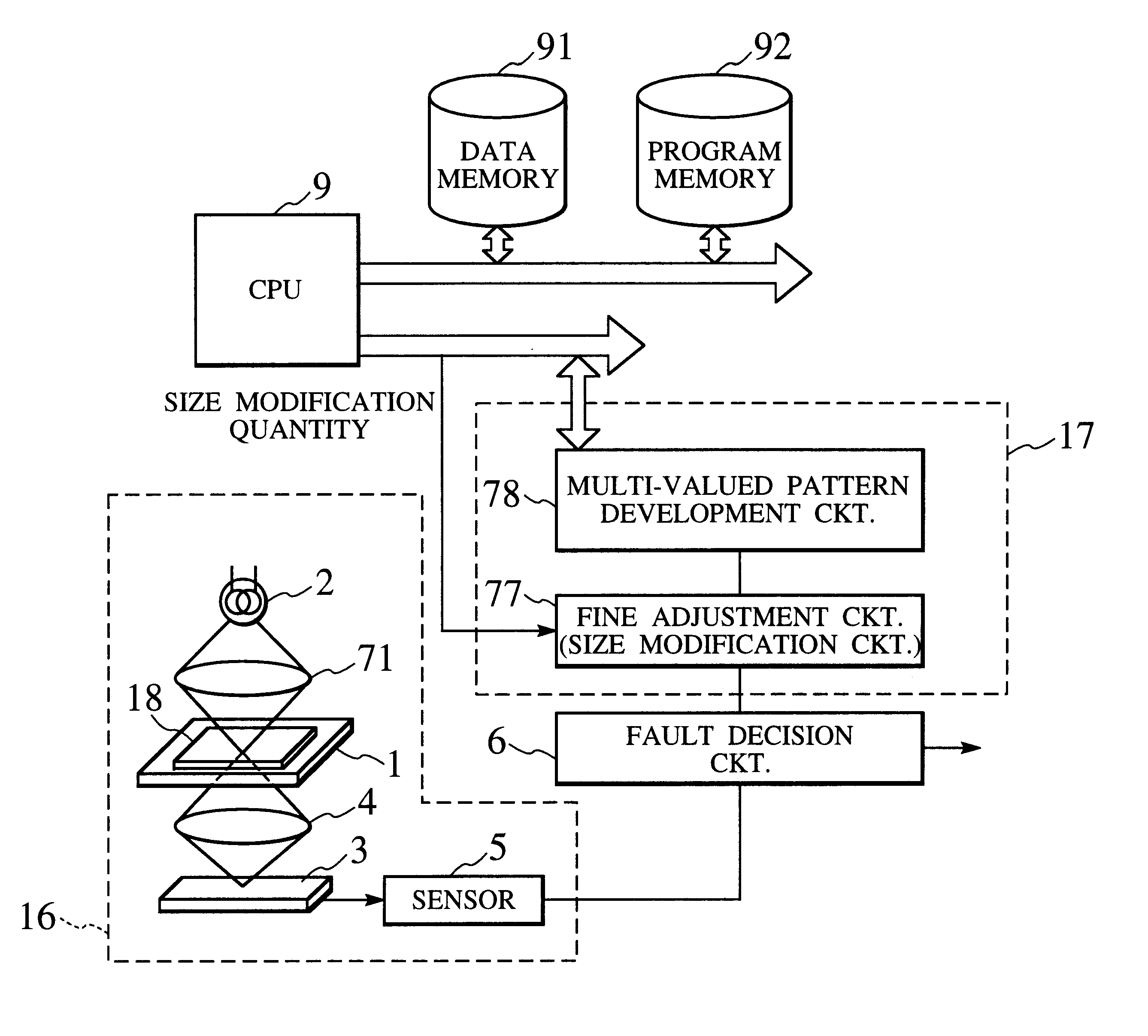Pattern inspection equipment, pattern inspection method, and storage medium storing pattern inspection program
a technology of pattern inspection and equipment, applied in the field of pattern inspection equipment, can solve the problems of poor lsis yield, inspection equipment often determines that the photomask pattern is defective, and the optical image taken from the actual photomask pattern generated on the glass substrate does not correctly match with the design pattern
- Summary
- Abstract
- Description
- Claims
- Application Information
AI Technical Summary
Benefits of technology
Problems solved by technology
Method used
Image
Examples
first embodiment
Outline of Pattern Inspection Equipment
FIG. 3A shows an outline of pattern inspection equipment according to a first embodiment of the present invention. The equipment has at least a measured data generation unit 16 for generating measured data from actual patterns delineated on a sample 1, and a reference data generation unit 17. The equipment also has a host computer having a CPU 9. The CPU 9 has an input unit (not shown) for receiving data and instructions entered by an operator, an output unit (not shown) for providing an inspection result, a data memory 91 for storing design data, and a program memory 92 for storing an inspection program. These elements are connected to one another through a data bus.
The measured data generation unit 16 has an optical image acquiring system including parts 1, 2, 4, and 71, for obtaining an optical image of the patterns, a photoelectric converter 3 for converting the optical image into an analog electric signal, and a sensor circuit 5 for conver...
second embodiment
FIG. 11A shows an outline of pattern inspection equipment according to a second embodiment of the present invention. The equipment has at least a measured data generation unit 16 for generating measured data from actual patterns delineated on a sample 18, and a reference data generation unit 19 for generating reference data used to test if the patterns are sound without faults. The reference data generation unit 19 has a multi-valued pattern development circuit 78 and a fine adjustment circuit 79 connected to the multi-valued pattern development circuit 78. The fine adjustment circuit 79 of the second embodiment differs from that of the first embodiment and is a corner rounding circuit for finely adjusting the roundness of corners in the pattern constructed with the gradational data to match with that of actual pattern. The other arrangements of the second embodiment are substantially the same as those of the first embodiment. Namely, the pattern inspection equipment of the second e...
PUM
 Login to View More
Login to View More Abstract
Description
Claims
Application Information
 Login to View More
Login to View More - R&D
- Intellectual Property
- Life Sciences
- Materials
- Tech Scout
- Unparalleled Data Quality
- Higher Quality Content
- 60% Fewer Hallucinations
Browse by: Latest US Patents, China's latest patents, Technical Efficacy Thesaurus, Application Domain, Technology Topic, Popular Technical Reports.
© 2025 PatSnap. All rights reserved.Legal|Privacy policy|Modern Slavery Act Transparency Statement|Sitemap|About US| Contact US: help@patsnap.com



